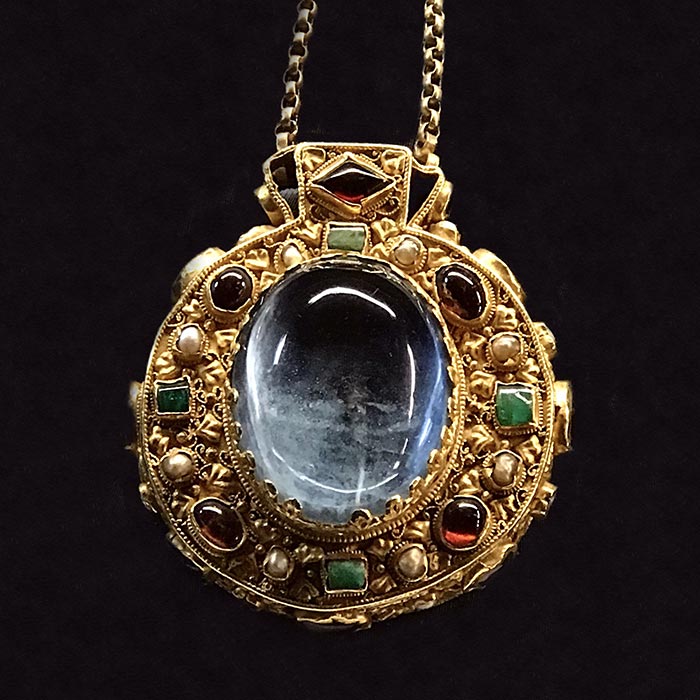
Originating in the ninth century CE, the Talisman of Charlemagne is an ornate gold piece embedded with gemstones which supposedly belonged to the Carolingian king himself. As it is said the talisman contains Virgin Mary's hair and a fragment of the True Cross, it is also a reliquary with considerable religious significance.
Although the knowledge of its exact origin has been lost to history, it is said that the reliquary was discovered around Charlemagne's neck when his body was exhumed by Holy Roman Emperor Otto III in the year 1000 CE. Charlemagne's remains were exhumed again by Holy Roman Emperor Frederick Barbarossa in 1166 CE for his canonization, at which point the talisman may also have been discovered; although these instances were recorded, there is no clear information regarding the reliquary. It wasn't until the 16th century when records of "a precious jewel, container of hairs and milk of the Saint Virgin Mary" appeared in a booklet of relics from Aachen, the capital of Charlemagne's Carolingian empire.
Engravings of the reliquary began to appear in the 17th century CE and the artifact's association with Charlemagne was solidified in history. The talisman was kept in the possession of the Aachen Cathedral Treasury until being gifted to Josephine de Beauharnais, wife of Napoleon Bonaparte, in the early 1800s. It is now kept in the French city of Reims in the Palace of Tau.
The history, or lack thereof, regarding the Talisman of Charlemagne highlights the importance of documentation and skepticism when it comes to historical research. Although I do not doubt that the reliquary is historically significant, it's origins and journey through history are largely unknown.
Panczer, Gerard, et al. “The Talisman of Charlemagne: New Historical and Gemological Discoveries.” Gems & Gemology, www.gia.edu/gems-gemology/spring-2019-talisman-charlemagne-new-historical-and-gemological-discoveries.
"Le talisman de Charlemagne" (PDF). Centre national de documentation pédagogique. Retrieved 12 September 2019. (PDF).



Beautiful image! And thank you for addressing the issue of King Otto finding Charlemagne's body. According to the sources, very bothered by the long fingernails growing through the gloves.
ReplyDeleteIt looks like a gorgeous piece, especially the gem in the center. I do agree that it is a shame there's not many records about this talisman's journey through history. I would like to know how it got from Charlemagne's body into the cathedral's treasury. When was the talisman removed from the tomb? Was some sort of decision made to remove it from Charlemagne's body? It must have been an intriguing conversation if that was how it happened.
ReplyDelete